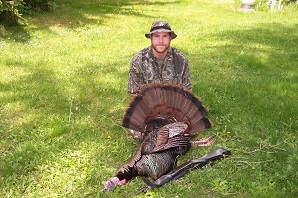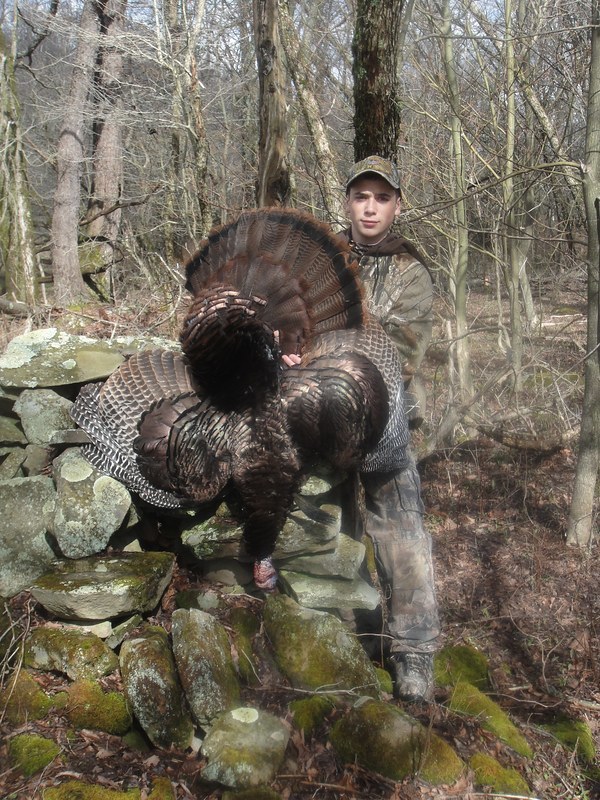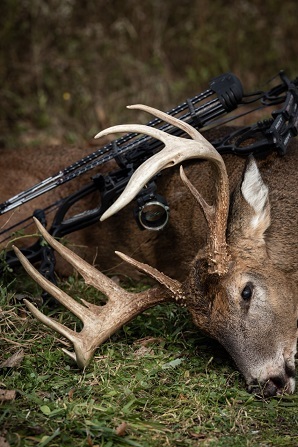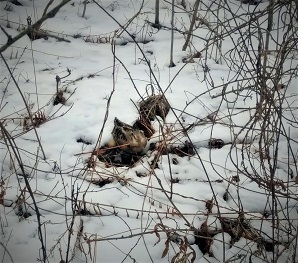Hunting and Trapping Newsletter
The New York State Department of Environmental Conservation sent this bulletin on 04/13/2020 02:41 PM EDT |
| DEC Delivers - Information to keep you connected and informed from the NYS Department of Environmental Conservation |
| Share or view as a web page || Update preferences or unsubscribe |
Hunting and Trapping Newsletter |
Attention Turkey Hunters: Hunt Safe, Hunt Smart!
DEC advises every hunter to hunt safe and smart. Hunting safe means treating every firearm as if it is loaded, keeping your muzzle pointed in a safe direction, keeping your finger off the trigger until ready to shoot, and knowing your target and beyond, but it also means following social distancing and other guidelines to prevent the spread of COVID-19:
Online Hunter Education Course Available For NY Hunters
First-time hunters who want to hunt during New York’s turkey hunting seasons must first earn a hunter education certificate prior to purchasing their first hunting license. This applies to both the regular season, May 1-31, and the youth (ages 12-15) turkey hunting weekend April 25-26. Unfortunately, all traditional hunter education courses have been canceled due to the Covid-19 pandemic, leaving many new hunters unable to get a certificate before spring turkey season. Now there is a new option for earning a hunter education certificate. For a limited time, first-time hunters in New York can complete the required hunter education course entirely online. The online course is available to anyone ages 11 and older and can be completed from a computer, tablet, or smart phone at any time. Students who complete the online course and virtual field day, and pass the final exam, will receive their hunter education certificate and can purchase a hunting license. Only those hunters ages 12 or older may purchase a license and head afield this spring. The cost of the course is $19.95. The online course will be available April 15 through June 30, 2020 on the Kalkomey website. DEC Announces 2019-2020 Deer Harvest Summary
Across the state, hunters continued to voluntarily pass up young bucks. The portion of yearlings (1.5 years old) in the adult buck harvest dropped to 37 percent, the lowest level ever, and for the first time, harvest of 2.5-year-old bucks (41 percent) exceeded that of yearling bucks. It is clear that hunters like to Let Young Bucks Go and Watch Them Grow, and the progress hunters are achieving through voluntary choice is remarkable. In addition, the 2019 season proved favorable for bowhunters, as take during the bowhunting season increased 18 percent from 2018. Deer take during the regular and muzzleloader seasons both dropped about six percent. DEC’s 2019 Deer Harvest Summary report provides tables, charts, and maps detailing the deer harvest around the state. You can find past harvest summaries on DEC’s website. Photo: Jeb McConnell, Livingston County, 2019 American Woodcock: The Harbingers of Spring
Getting outdoors and observing wildlife is a great way to stave off cabin fever in these tough times of social distancing. The coming weeks are also the perfect time to get outdoors and listen for the distinctive breeding calls and display of the American woodcock. Visit the Cornell Lab of Ornithology website for audio recordings. Each spring, in an effort to attract a female, the male woodcock will periodically “peent” from the ground. Then he will fly 300-500 feet in the air and slowly fly in a circle while rubbing his outermost flight feathers together to make a “twinkling” sound. Once you’ve heard this distinctive calling display, you can’t miss it! The best time to hear woodcock is April through May during the final hour of light, often just after legal sunset. To improve your odds of finding these birds, look for old farm fields that are becoming overgrown or agricultural fields near dense cover. Finding places with less noise pollution will also greatly increase your odds of hearing woodcock – so skip the field with a babbling brook next to it. |

 Spring
Spring 
 Hunters in New York harvested more than 224,000 deer in 2019-20. The 2019 estimated deer take included 103,787 antlerless deer and 120,403 antlered bucks. Regionally, hunters took 30,236 deer in the Northern Zone and 193,954 deer in the Southern Zone.
Hunters in New York harvested more than 224,000 deer in 2019-20. The 2019 estimated deer take included 103,787 antlerless deer and 120,403 antlered bucks. Regionally, hunters took 30,236 deer in the Northern Zone and 193,954 deer in the Southern Zone. The arrival of American Woodcock back to New York is a telltale sign that spring is here to stay. Despite their diminutive size, woodcock are one of the earliest ground-nesting birds in the state. Just this week, DEC Biologist Jeremy Hurst found this female nesting in the snow on his property near Albany. If you’re curious where NY’s woodcock come from - DEC is currently part of a large cooperative research project to track both Fall and Spring migration of woodcock throughout their eastern range using tiny GPS transmitters. For weekly updates on their migration, please visit the
The arrival of American Woodcock back to New York is a telltale sign that spring is here to stay. Despite their diminutive size, woodcock are one of the earliest ground-nesting birds in the state. Just this week, DEC Biologist Jeremy Hurst found this female nesting in the snow on his property near Albany. If you’re curious where NY’s woodcock come from - DEC is currently part of a large cooperative research project to track both Fall and Spring migration of woodcock throughout their eastern range using tiny GPS transmitters. For weekly updates on their migration, please visit the